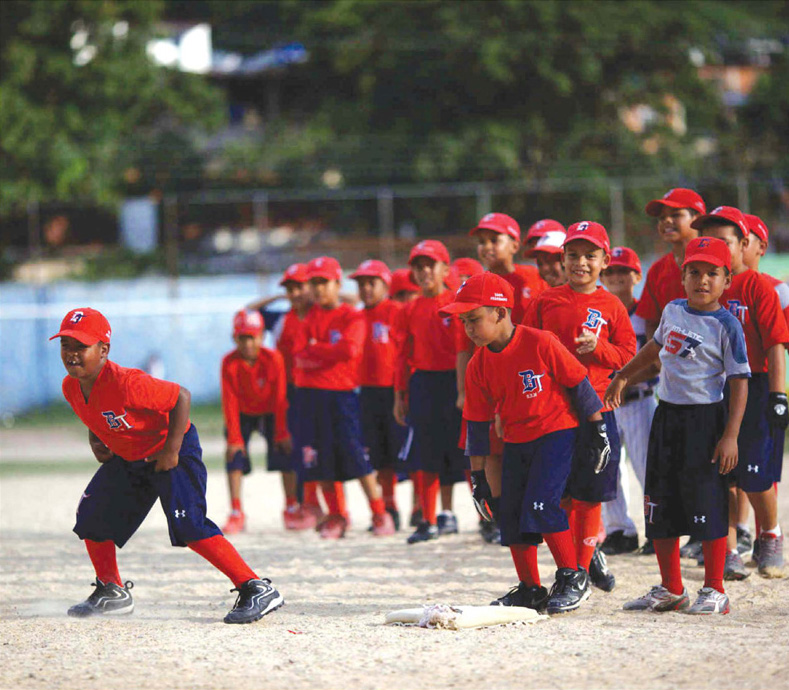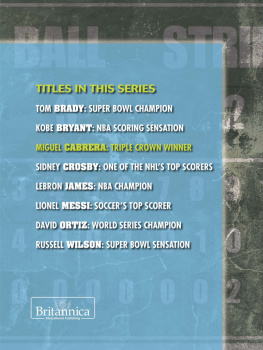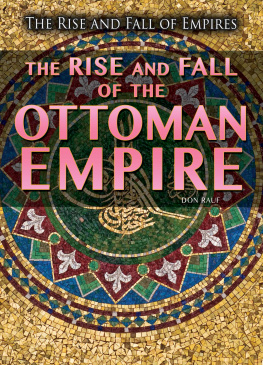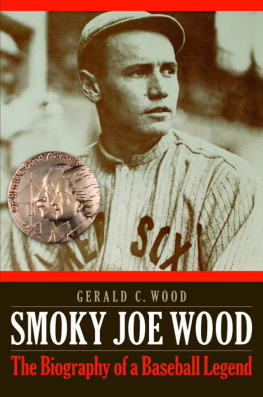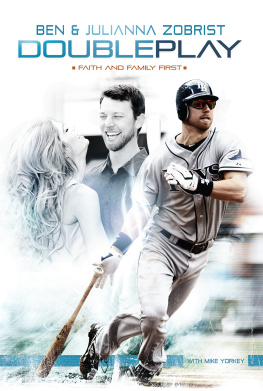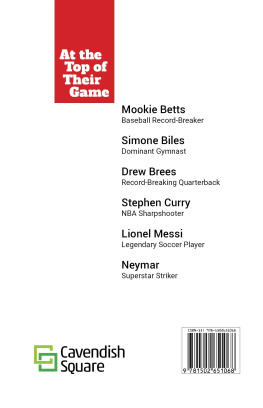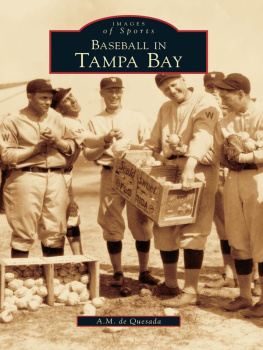
Published in 2016 by Britannica Educational Publishing (a trademark of Encyclopdia Britannica, Inc.) in association with The Rosen Publishing Group, Inc.
29 East 21st Street, New York, NY 10010
Copyright 2016 The Rosen Publishing Group, Inc. and Encyclopdia Britannica, Inc. Encyclopaedia Britannica, Britannica, and the Thistle logo are registered trademarks of Encyclopdia Britannica, Inc. All rights reserved.
Distributed exclusively by Rosen Publishing.
To see additional Britannica Educational Publishing titles, go to rosenpublishing.com.
First Edition
Britannica Educational Publishing
J. E. Luebering: Director, Core Reference Group
Anthony L. Green: Editor, Comptons by Britannica
Rosen Publishing
Hope Lourie Killcoyne: Executive Editor
Nicholas Croce: Editor
Nelson S: Art Director
Nicole Russo: Designer
Cindy Reiman: Photography Manager
Library of Congress Cataloging-in-Publication Data
Rauf, Don, author.
Miguel Cabrera : triple crown winner/Don Rauf.First edition.
pages cm.(Living legends of sports)
Includes bibliographical references and index.
ISBN 978-1-6804-8098-6 (eBook)
1. Cabrera, Miguel, 1983Juvenile literature. 2. Baseball playersVenezuelaBiographyJuvenile literature. I. Title.
GV865.C25R38 2016
796.357092--dc23
[B]
2014039769
Cover, p. 1 Duane Burleson/Getty Images; pp. 4, 7, 89, 1011, 15, 2021, 25 AP Images; p. 12 Scott Rovak/AFP/Getty Images; p. 17 Mike Janes/Four Seam Images/AP Images; pp. 1819 Todd Rosenberg/Sports Illustrated/Getty Images; pp. 2223 Scott Lewis/The News & Observer; p. 26 New York Daily News Archive/Getty Images; p. 27 Harry How/Getty Images; pp. 2829 Victor Baldizon/Getty Images; p. 30 Shaun Best/Reuters/Landov; p. 33 Bloomberg/Getty Images; p. 34 Mark Cunningham/MLB Photos/Getty Images; p. 35 Joe Skipper/Reuters/Landov; p. 36 John Parra/Getty Images; p. 38 Reuters/Landov; cover and interior pages background images iStockphoto.com/TriggerPhoto (scoreboard), iStockphoto.com/Nikada (texture).
CONTENTS
I n many ways, Wednesday, October 3, 2012, wasnt an extraordinary day. In Kansas City, Missouri, the Detroit Tigers were playing a final game against the Kansas City Royals before the play-offs began. The Detroit Tigers had already clinched the title of American League Central champions. The teams star batter, Miguel Cabrera, was having a bad night. The Tigers third baseman had flied out in the first inning and struck out in the fourth. It wasnt the best night for the leagues best hitter.
Cabrera may have been distracted because on this night he was poised to become a Triple Crown winner. A Triple Crown winner is the rare batter who captures all three batting honors for the season for his leaguemost runs batted in (RBIs), best batting average, and most home runs.
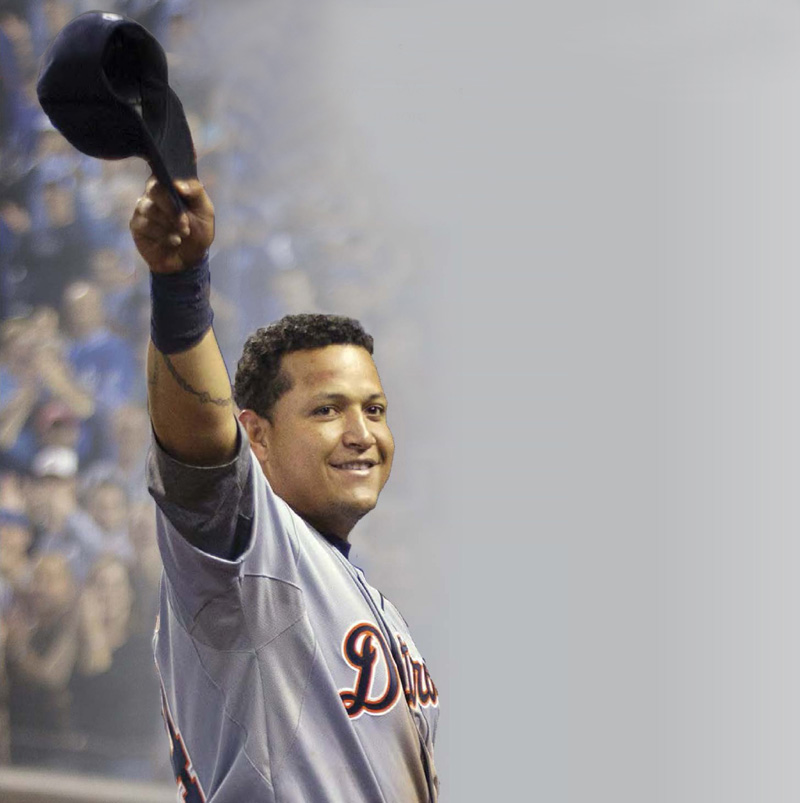
Miguel Miggy Cabrera, of the Detroit Tigers, waves to the crowd in Kansas City on October 3, 2012, the day he became a Triple Crown-winning batter.
The twenty-nine-year-old had the most RBIs139. He also had the best batting average, .330. (This number represents the number of hits that puts a player on base per times at bat. Players with a batting average above .300 are considered very good.) Basically, Cabrera had been getting a base hit for every three times at bat.
He also had the most home runs for the seasonforty-four. That was being threatened, though, in another game this night by New York Yankee center fielder Curtis Granderson.
Granderson started that game with a total of forty-one home runs for the season. But during the game, he hit one home run and then another. He was up to forty-three home runs. Cabrera saw that his shot at the title might slip away. Granderson, who was once Cabreras teammate on the Tigers, was a dinger away from matching Cabreras.
Granderson was due up to bat again in the seventh inning. With the Yankees way in the lead, Granderson gave up his turn at bat. When Cabrera heard the news, he knew the title was his.
Miguel Cabrera was the first to win the Triple Crown title in forty-five years, since Carl Yastrzemski won it in 1967. Miggy, as he was nicknamed, joined a list of some of the games top sluggers, including Mickey Mantle, Ted Williams, and Lou Gehrig. The ballplayer who had started from humble beginnings in Venezuela had earned a spot among baseballs best and secured his spot in baseball history.
J os Miguel Torres Cabrera was born on April 18, 1983, in Maracay, Venezuela. Miggy was raised in a small, dirt-floor home in a poor section of the city called Padrera. His home had one bathroom, a kitchen, and just two other rooms. It was one of five homes where he and his extended family lived. Although he grew up poor, Miggy didnt have to be rich to enjoy a supportive family and playing baseball. Sometimes, he would even play with a stick for a bat and a wad of paper as a ball.
From the very start, Cabrera seemed destined to play the game. Miggys fatheralso named Miguelwas a good amateur ballplayer. When his plan to become a pro athlete didnt pan out, however, he became an auto mechanic.

Young baseball players stand in front of an advertisement featuring Cabrera. He is a hero in his home country of Venezuela.
For fourteen years, Cabreras mother, Gregoria, played shortstop on the Venezuelan national softball team. Reportedly, his parents met on the baseball diamondso when people say baseball was in Miggys blood, its true. When he was very small, he spent time playing in the dugout when his mom was busy snagging line drives in the field.
Baseball extended to his uncles as well. Uncle Jose Torres has operated a baseball training school in Maracay. His uncle David Torres was signed to play in the St. Louis Cardinals system. He advanced to the minor leagues but his career petered out. Uncle David regularly helped train young Miggy. At age four, Cabrera was already tossing and hitting the ball.
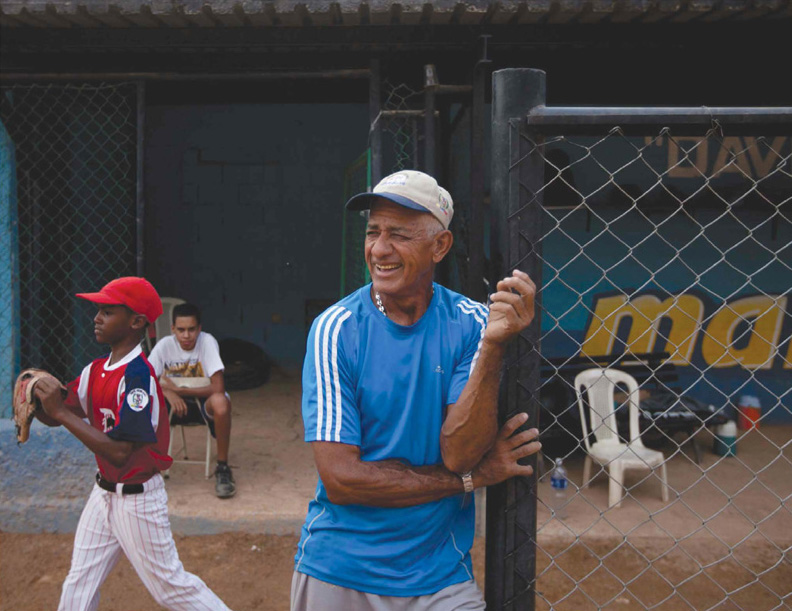
Many in Cabreras family played baseball, including his mother and father. His uncle Jose Torres has operated a baseball training school in his hometown.
QUICK FACT
Miggy grew up idolizing Dave Concepcin, another baseball star from his hometown of Maracay. Concepcin went on to be a top player with the Cincinnati Reds.
A Pro Ball Player in the Making
By age six, Miggy was highly competitive. All he could think about was playing in the big leagues. His uncle David would sometimes warn him to be cautious if he ever had the opportunity to play in North America. He didnt want his nephew ever to be taken advantage of by any untrustworthy characters who might want to benefit from his talent and treat him unfairly. Uncle David wanted Miggy to protect himself.
